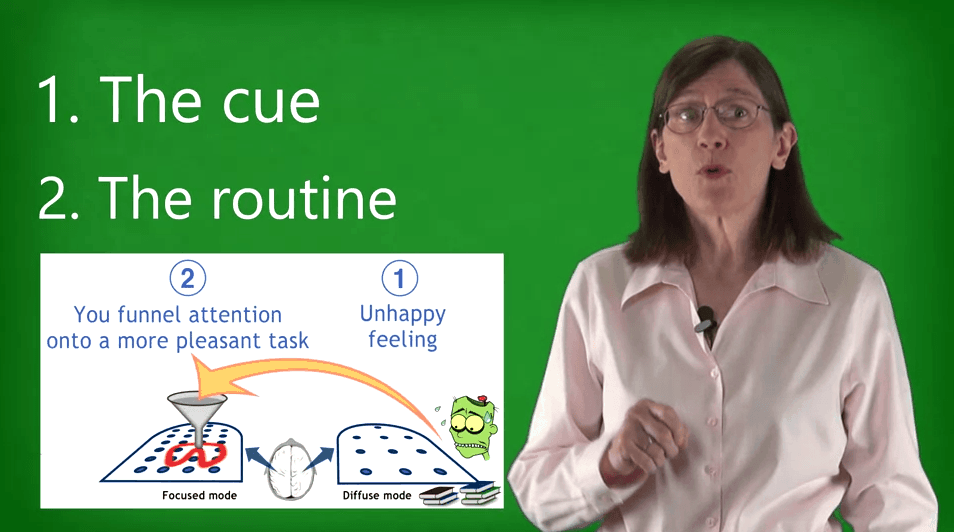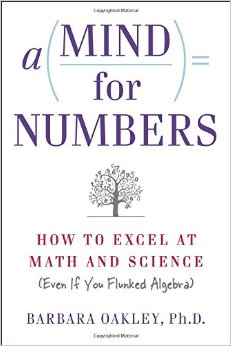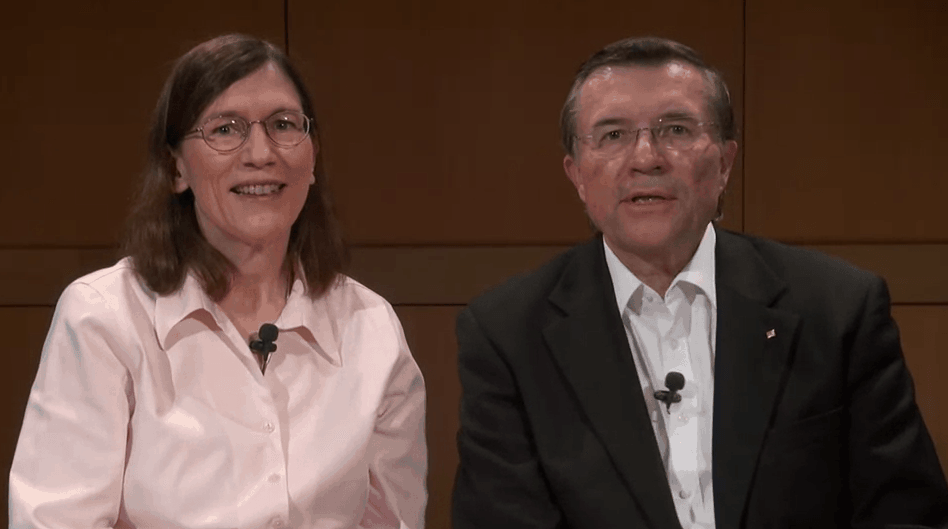Course Review: Learning How To Learn
Review For One of Coursera’s Most Popular MOOC, Learning How To Learn
Review by Rebecca Judd, Lead TA for Learning How To Learn. Took the course? Write your own review here.
“If there’s a way to do it better… find it.” – Thomas Edison.
We begin learning from the moment we are born, yet as we go through life we never learn how to learn. This leads to a lot of us turning away from, or even fearing, learning new things. Learning can become a chore: something we have to do in school and can then discard or de-prioritize once we leave, so that we can focus on the “real” things about being an adult.
We begin learning from the moment we are born, yet as we go through life we never learn how to learn
But what’s more real than learning new things, or learning how to do old things better? What is more human, adult, and mature than continually growing as a person, and finding that in-so-doing we get more out of life in an ever-continuing spiral of learning and growth?
This is the path upon which Learning How To Learn sets your feet. This Coursera MOOC, run by Dr. Barbara Oakley and Dr. Terry Sejnowski in conjunction with UC San Diego, enables you to build the mental tools necessary to learn anything effectively. The tools you will pick up in this MOOC are carefully explained and specific. Yet they can be applied to anything you wish to learn, be that math, science, languages, or art.
What is Learning How To Learn?
Learning How To Learn course intro
325,000 students worldwide have taken the MOOC.
The four-week course takes you on a structured, all-inclusive tour of your brain: how and why it works as it does for learning. Since it started last year, 325,000 students worldwide have taken the MOOC.
In the first week you’re introduced to the two modes of thinking – diffuse and focused – and how they work, both together and individually. You also touch on subjects like memory, procrastination, and how sleep affects your brain and its ability to learn. These are also topics which are returned to in more detail in later weeks.
You also touch on subjects like memory, procrastination, and how sleep affects your brain and its ability to learn.
When I took the course as a student in August 2014, this first week’s worth of information left me stunned. There was no question in my mind that I had just learned some of the most important information of my life.
I finally understood why it was not only okay but actually important to sometimes allow my brain to rest and switch away from what I was learning or working on, rather than trying to force it to stay focused. In today’s “must be ultra-productive and work extremely hard” culture, Learning How To Learn carries some crucial messages that many of us need to hear.
And that wasn’t the only “lightbulb” moment I had. As the course goes on, you’re introduced to how and why your brain learns (a concept called “chunking”), and how to help it learn most effectively. In later weeks you learn in more detail about procrastination and memory, the imposter syndrome, why exercise and sleep are important to keep your brain and its ability to learn healthy, and much more.
In today’s “must be ultra-productive and work extremely hard” culture, Learning How To Learn carries some crucial messages that many of us need to hear.
All the way through the four weeks of the course, you’re given a goldmine of learning strategies that are practical and which you can implement as soon as you finish a lecture. Some of these you may have heard of, such as the Pomodoro Technique, but many will likely be new to you.
The course’s roots are in neurology and science. At every step the professors explain not just how to learn better, but why these concepts work. They manage to translate their deep, scientific expertise into explanations that any lay-person can understand. They often do this with strong imagery and analogy (which, they explain, is also an important tool for learning), and the imagery enables them to keep the course light, fun, and amusing as you learn concepts rooted deeply in science.
Some of the course’s main themes are zombies, vampires, and pinball machines; they fit together perfectly with the course’s other themes of neural structures, modes of thinking, and challenges we face in day-to-day life (such as procrastination and the imposter syndrome).
Each week’s set of lectures includes some supporting interviews. These are with a range of people, from experts in learning in various fields to other scientists who can add different, yet very accessible, perspectives to the week’s material.
The course has an extensive reading list, which is all optional. You can completely ignore it and just watch the lectures if you wish, or you can dive into this deeper reading as much as you’d like. The book A Mind for Numbers: How to Excel at Math and Science (Even If You Flunked Algebra) deserves special mention; it was written by Dr. Barbara Oakley, and it acts as an excellent companion to the MOOC (and doesn’t just apply to math and science).
Behind the scenes
You’ll see (relevant) surfing zombies and flying mules while Dr. Oakley is talking about how your brain works.
The slides shown in the lectures are fairly simple, yet that doesn’t detract from the lectures at all. Rather the slides work effectively to add to the lectures. They’re not so distracting that you miss what’s being said, and they show just the right information at any given point. As I mentioned before, Learning How To Learn makes good use of imagery and humor: this is often seen in the background slides, where you’ll see (relevant) surfing zombies and flying mules while Dr. Oakley is talking about how your brain works.
The lectures themselves tend towards the five-minute mark. Some of them are a bit longer, but generally they’re well-suited to being fit in around the rest of your day if you don’t have an hour or two to sit down and watch the week’s lectures all at once.
Dr. Oakley leads most of the lectures, while Dr. Sejnowski pops in with one or two lectures every week. They are both experts in their fields.
Dr. Sejnowski is an accomplished scientist of multiple scientific disciplines, and whose main research goal is to discover the principles linking brain mechanisms and behavior. He is the Francis Crick professor at the Salk Institute, and fills other eminent roles in the scientific community.
Dr. Oakley is an astonishing woman; she hated math and science in her teenage years, but later challenged herself to “re-tool” her brain to see if she could learn, and learn to love, those subjects. She succeeded. She went on to attain a Ph.D. in engineering, and became a much-accomplished professor of engineering as well as a best-selling author. Now she is devoted to sharing what she’s learned about how to learn with anyone who’d like to know more.
Requirements
All you need is an open mind and a spark of curiosity.
Learning How To Learn requires very few prerequisites. You do not need a degree, understanding, or love of any specific topic. You don’t need to be a scientist to understand the science. It’s all very well explained. The course itself is wonderfully accessible. All you need is an open mind and a spark of curiosity.
The course’s time commitment is estimated at around 3–4 hours a week, and that is fairly accurate; however, if you wish you can spend more time delving into extra reading.
The course is graded via a weekly quiz, and you must pass those quizzes to pass the course. There is no Statement of Accomplishment for this course. However, you can gain a Verified Certificate using Coursera’s Signature Track system. If you’re aiming for a certificate you also need to complete two assignments and submit them to be graded by your classmates, and also complete some peer grading yourself.
These assignments are fairly flexible in that you can spend more time on them, if you wish, and really get into them. They can help you think deeply about the course and what you’ve learned. So far, the course has had some students complete really quite imaginative and creative assignments. Equally, there is no requirement that you bust a gut trying to create a work of art!
Forums
The MOOC’s forums are lively. There’s often quite a lot of discussion going on at any given time during the course. Sometimes there is so much going on, because the course tends to attract large numbers of students, that it can be a little overwhelming to join in. The course staff are aware of this and are very reassuring; they note that you don’t have to read everything, and that you can start to get a lot out of the forums simply by choosing one or two interesting topics to look at. The forums are safe, and have had very few “trolls”.
There’s a sense of camaraderie among students, which grows as the course continues, and students often help each other out.
There is a sense of camaraderie among students, which grows as the course continues, and students often help each other out. This sense of community is fostered by an excellent team of TAs who work very hard to help students with technical problems, and whom also pitch in to discussions; not just because they want to help, but because they are themselves – clearly – intensely interested by the material and discussions.
Dr. Oakley is also absolutely engaged with the forums. She spends a lot of time reading, replying, and helping out. I don’t know how or where she finds so much time to spend on the forums, but she does. It’s clear that it’s because she really wants to share this knowledge, and deeply cares about ensuring her students are getting the most out of Learning How To Learn.
Wrap Up
I am aware I haven’t really said anything bad about this course. I feel I should, in the interests of balance and objectivity, particularly as I am now the course’s Lead TA. But there is nothing bad to say about it. For a time commitment that’s fairly minimal, if you wish it to be, this course is one of the best things you can do to improve your quality of life.
The knowledge and tools you will gain here will have a profound effect on your life for years to come.
The knowledge and tools you will gain here will have a profound effect on your life for years to come. I’ve found these effects do not just apply to learning, but also to my work and my life in general. This course, ostensibly about learning, has helped me understand how my brain works and why. It’s given me general reassurance and new confidence in myself, and it can do the same for you.
There is a better way to learn, and you’ve found it. Now learn about it and watch it change your life











ManuelMLS
Awesome introduction about this course! I’m expecting right now to do it. I want to learn how to learn a improve my actions from now on, at work, life, studying, playing and thinking anything,
Arthur
Impressive introduction! Waiting for the course to begin.
Boykie Mackay
Excellent. I’m in the process of clearing out my schedule for January so I can put some effort into this course. Really looking forward to it!
Rebecca Judd
Great! I hope you get a lot out of it. There’s certainly opportunity to get more deeply into the material if you have some extra time.
Samuel
I can’t wait! Awe-inspiring introduction
jeep
I am also registered and looking forward to the class, but I’d like some more info on the two assignments (for those who wish to get a certificate), and peer-grading. What if you happen to draw a couple of super-critical reviewers as opposed to someone less critical? For example, if your assignment is being graded by someone who will be studying psychology, that person may trash your assignment over a difference of opinion; likewise, if you draw a future English major as your reviewer, he/she may tend to nitpick form over content. So I’m kind of hoping that someone with some experience in this type of grading system would comment.
Rebecca Judd
Hi there!
I appreciate you might be anxious about being reviewed by peers: it’s definitely a feeling I’ve had.
I can’t speak for other courses, but so far our experience of students receiving peer reviews has been very positive. For a start, we provide a detailed grading rubric to help guide students in reviewing objectively and fairly, and generally we’ve found people follow that.
Occasionally, lower scores, if given, are appropriate. Even in such cases those lower scores tend to be balanced out by other reviews; everyone submitting an assignment is peer reviewed by 5 other people, so your score at the end is most likely an accurate average.
In cases where you really don’t agree with a reviewer and feel it’s holding your assignment/score back, you can appeal to the TAs. The Learning How To Learn TA team works very hard to help students, including on grade questions and appeals in the rare cases they’re brought up.
Many students find peer reviews to be helpful. So far we’ve found the course has a wonderful culture of caring and friendly students; people genuinely want to help each other further their understanding of the material. That can happen in peer reviews too.
Finally, there was an excellent post about the positives of peer reviews by a student in our last session. We’re in the process of asking the student whether she’s okay with us sprucing her post up a bit and releasing it as a document in the course reading materials. If that happens, I’ll come back and let you know to look for it.
I hope this helps. If you have any problems or worries, please do post on the forums and ask the TAs for help. That’s what we’re there for, and we want you to get the best experience you can out of the course.
jeep
Hi Ms. Judd – Thank you for the explanation of how peer review works; it was exactly the info I was looking for.
Thank you also for being involved here in the forum – it’s always good to know that someone is keeping an eye on things if there might be questions or problems.
I’m ready and excited to begin the course!
Eduardo Ruiz-Ayúcar Díaz
I’m really looking forward to starting the course. I’m already Reading A Mind for Numbers and find it amazing!
Rebecca Judd
Only a few hours to go! Hope you enjoy the course 🙂 the book is an amazing companion to the MOOC.
Jose Anselmo de Siqueira
Wow! What a tremendous work in teasing out the issues about “Learning How To Learn”.
Gustavo Freitas
Nice post! How does the certificate works with respect to grades and tests? What type of assignments are those two you mentioned? I bought the book to follow the course and I’m waiting to begin.
Rebecca Judd
Hi Gustavo! Glad you liked the post 🙂 Looking forward to seeing you in the course!
Certificates
In order to receive a Verified Certificate you need to receive at least 70% across the entire course. For a Verified Certificate with Distinction, you need at least 85%. You will be able to find details on the weighting of quizzes and assignments in the “Basics about the course” pages within the MOOC, but if you have any problems please don’t hesitate to post on the forums or ask us on Twitter (@LHTL_MOOC).
Assignments
The first assignment aims to get you to reflect on a learning challenge you’ve had. The idea is that you write about one page on a situation you have experienced recently/are experiencing now related to learning, why it’s important to you, what challenges you’re facing with it, and how you can apply some of the techniques you’re learning to the situation. This doesn’t have to be about a college course but can be literally anything you’re learning at present.
The second assignment encourages you to explain some of the key topics you’ve learned in the course, with the idea that you’re educating other people and in doing so concreting the topics in your own mind.
The scope for this assignment is broad so you can make it as detailed as you’d like. You also have a large amount of choice on how you present your project. Some people make documents, pictures, etc; others have got really into it and made videos, rap songs, or childrens’ books. You’re not penalised for simpler formats though!
You do have to make sure your chosen assignment 2 format and where you host it will be accessible to other students who will be grading your work (i.e. posting things on YouTube is inadvisable as YouTube is blocked in some countries and students will be unable to access your work to grade it).
Gustavo Freitas
Valuable information, thanks a lot! 😉
Sterling P.
This class sounds awesome! I’m excited to start.
Bob Miller
I’m really looking forward to this class, for the basic technique is one I use when I prepare to give a talk on a specific subject. I review the material, then let it sit a while before coming back to it…connecting it to other people and events that I encounter. Sometimes what I initially write down gets tossed aside, as something better emerges.